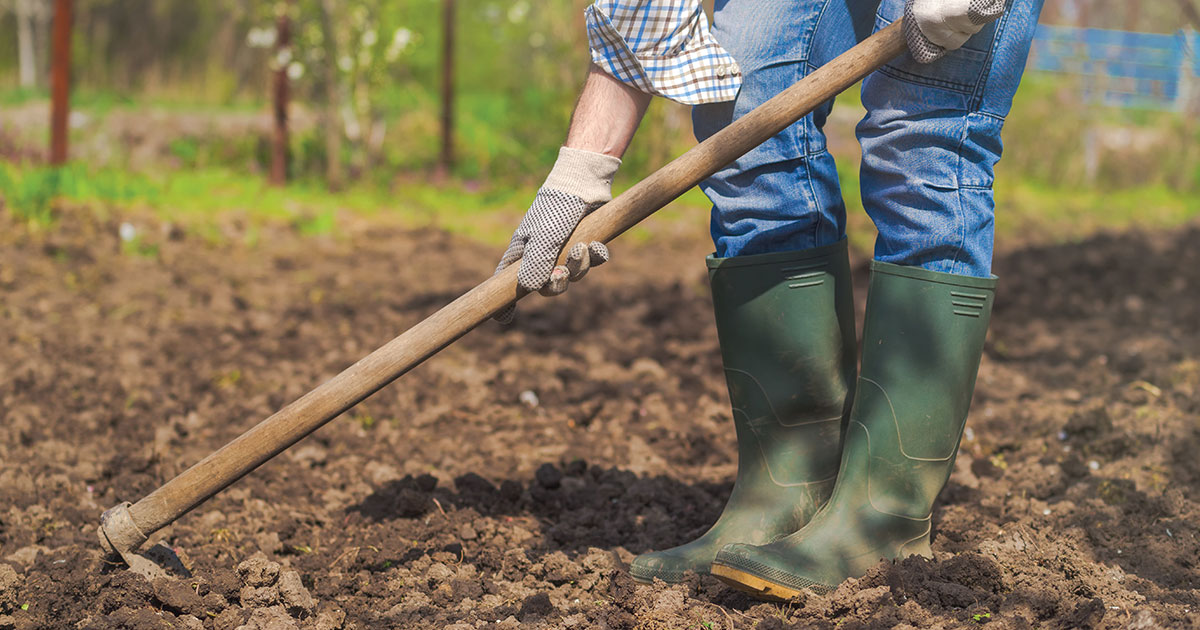Standing. Thinking. Assessing. A gardener’s beginnings require methodical plans. Whether you have an existing garden or starting anew, preparation is the key toward success, especially with the diverse options available to you. With a number of suggestions, you’ll have a plan and be ready to “dig in!”
Identifying the Best Location
The prerequisite for choosing a location may be the proximity to the house; however, consider a few additional factors:
- Does the site receive at least six to eight hours of sunlight each day? With the intensity of southern exposure to the garden’s future location, your crops will flourish. If exposed to five hours of daylight, the fruit may not reach its full potential.
- What is your plan for watering? Do you plan to use hoses, or is it possible to establish a more natural option such as collecting rainwater in barrels?
- What is the soil type? Sandy soil will feel gritty. Despite its ability for drainage, you’ll need to amend the soil by adding compost. Clay soil can hold nutrients and moisture but requires a large amount of organic matter to promote drainage.
- Is it difficult for you to dig into the ground due to obstructions such as large rocks or thick roots?
Increasing the Organic Matter of Soil
The ideal depth for plants to grow is roughly six inches. While the garden may not achieve excellent health in its first year, consider the following suggestions to establish an improved texture and health.
Do’s:
- Compost is an essential additive to your garden; although a truckload is expensive. With a base of compost; however, you can supplement with other additives.
- Dried manure combined with compost and your base level of soil will offer a good start.
- Before the winter months, consider adding one of the best sources of organic matter – leaves. (It is best to mow over them first. Whole leaves prohibit water from penetrating.) While adding trace minerals such as calcium and magnesium, leaves also provide a welcomed food source for earthworms and other microbes. Leaf mold retains up to five times its weight in water, making it an essential additive to any garden. (Leaves placed over winter plants will serve as an insulator, protecting against winter winds and cold.)
- Organic mulches can include formerly living materials such as paper, shredded bark, grass clippings and straw. Weed-free hay or straw will keep down weeds while adding organic matter to your soil. After tilling in the early spring, the soil will comprise a thickened texture perfect for establishing mounds.
- When wood ash is cold, add to your garden, as it is a natural lime additive.
- If you do not have a compost, you can toss banana peels and coffee grounds into your garden. Digging a trench and covering the compost with soil is an option; however, the area will need time and direct sunlight as well as occasional water to fully decompose.
Don’ts:
- Be careful what classifies as topsoil. You may bring diseases, harmful insects and chemical residues into your garden which will result in an uphill battle of few harvesting successes.
- Mulch is a quality amendment; however, it may take up to two years to decompose. If you can tell its mulch, the area is not yet ready to till. Without a soil test to determine your current pH level and nutrients, it is best not to add fertilizers. By continuing to amend your soil in the early spring and late fall, expect to find darker and enriched soils with specks of minerals.
Considering a Cover Crop?
The dream of planting never really diminishes for an avid gardener. Thoughts continue to arise in how to prevent winter weeds. One solution is planting a cover crop. Mustard, radish and buckwheat improve the soil structure while removing excess nitrogen. Alfalfa, clovers and especially legumes work to convert the soil’s bacteria into nitrogen. The cover crop acts similar to mulch by preventing sun exposure to weed seeds. Just imagine entering the garden in spring and discovering the soil is loose and light, and perfect for planting.
Composting
Composting is a daily effort. It requires a pail to collect kitchen scraps that are not limited to carrot and potato peels, coffee grounds and crushed eggshells, and dumping into an outdoor bin. To balance the proportions, the compost concoction requires brown matter comprising grass clippings, weeds and leaves. With the sun and water to add moisture, the outcome creates a mineral-enriched soil perfect for the next growing season. This year, don’t blow leaves to the curb. Nature only provides the gift annually, use it well!






















